Business expansion allows you to continue growing your business to new heights. However, it also comes with a lot of challenges and considerations. So, how do you successfully expand a business?
Business expansion often involves seeking new opportunities for generating more profit. Common methods of expansion include entering a new market, opening a new location, forming a partnership, or offering new products. Expanding a business also involves careful planning.
Whether you are seeking international expansion or national expansion, use the following guide to develop an effective business strategy.
What Are the Most Common Methods of Expansion?
One of the first details to consider is how you plan to expand your business. Seeking new opportunities and growing your business may involve one or more of the following steps:
- Moving into new markets
- Optimizing sales in existing markets
- Adding new offerings
- Partnering with other businesses
- Mergers and acquisitions
Each of these options includes separate advantages and potential risks. Here is a closer look at the pros and cons of each.
Moving Into New Markets
Entering a new market is a common method of expansion. It allows you to reach customers in new regions or other segments of your industry.
For example, you may try expanding your operations to another city, state, or country. You may also expand into other areas of your industry by offering a wider range of products or services.
Moving into new markets increases your potential customer base. You need to continue acquiring new customers, which may be difficult if your current market is oversaturated or limited in size. Moving into a new market also comes with possible challenges, including limited brand recognition and increased competition.

Optimize Sales in Existing Markets
Optimizing sales in existing markets helps you expand your business through deeper market penetration. The goal of this business strategy is to capture a larger share of the customers in existing markets.
Here are possible strategies for increasing sales in your current market:
- Lower your expenses – cheaper supplier for goods and services is usually the go to option, you can also look to maximise via economies of scale
- Increase your marketing – look into different platforms and option in trying to capture you market segment. i.e if you audience is young, you can potentially advertise on TikTok
- Enhance your products -this doesnt necessarily mean you need to change, it could be the most subtle of differences such as eco-friendly packaging or a better video software for online courses
Improving sales in your current market makes your business more profitable. It can also help establish your business as a leading brand in your niche. These benefits can better prepare your business for outward expansion, such as international expansion.
One potential hurdle is limited demand for your products or small market size. A small market offers less room to grow.
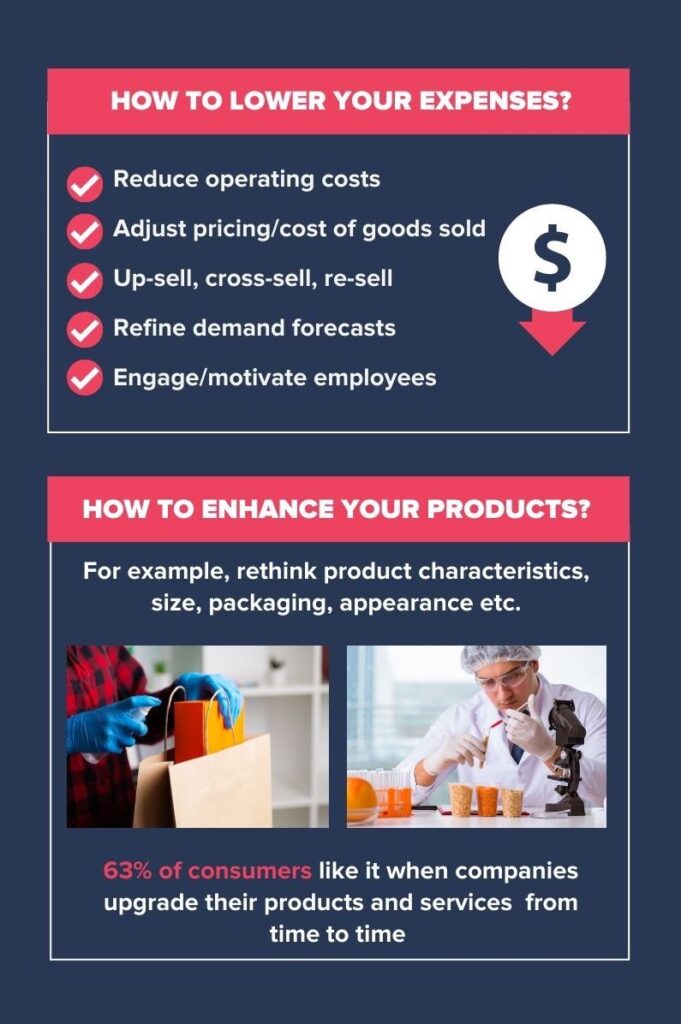
Add New Offerings
Many business expansion strategies involve the creation of new offerings. You may create new products or services for existing or new markets.
Having multiple product lines can help diversify your revenue, attract new customers, and build more momentum for growth. However, creating new products also frequently requires high costs and lengthy timeframes.
Depending on the industry, the product development process may take a few weeks to a year. Each stage of development includes costs related to labor and other resources.

Partner with Other Businesses
Partnering with another business often requires less commitment compared to other expansion methods. Partnerships are useful for reaching new markets with less of an investment, as your business is not 100% liable for all costs.
For example, you can form a partnership for the release of a new product or service in a market that you are considering expanding to. Instead of opening a new location or expanding your operations, you can leverage your partner’s resources.
Partnerships also come with risks. You need to trust that your partner will not harm your reputation. Selecting the right partner involves finding a business that aligns with your values, which is not always easy.
Mergers and Acquisitions
Merging with a business or acquiring another business can increase your market share or allow you to enter new markets. A merger occurs when two companies consolidate operations under a single business. Acquisitions involve purchasing another company.
The outcome of a merger or acquisition varies depending on the terms of the deal. In some cases, the two companies continue operating with their existing brands. Other mergers and acquisitions involve the dissolution of a brand or the creation of a new one to encompass both companies.
Mergers and acquisitions can make your business more efficient and profitable. You increase the scale of operations. However, these advantages can also create challenges. For example, increasing the size of your business through a merger or acquisition may increase the difficulty of communication or coordinating internal processes.
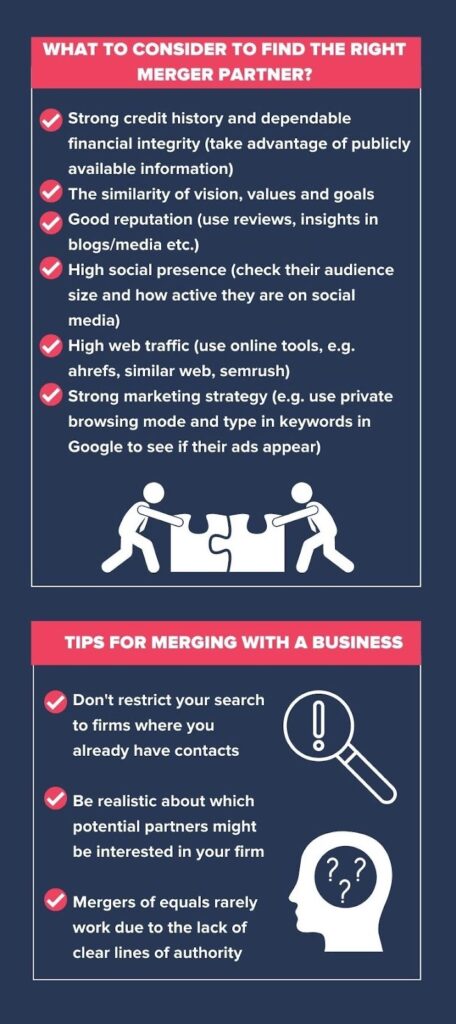
What to Consider When Expanding Your Business
As every method of expansion has separate risks, you need to assess which method makes the most sense for your business. You also need to assess potential opportunities, estimate costs, and plan the logistics of expanding your business.
Some of the most common considerations include:
- Internal Processes
- Financials
- Employment
- Exporting
- Licensing
- Partnerships/Mergers
- Funding
- Testing the Market
- Localizing Product/Services
- Economies of Scale
- Brand Growth
- Research and Analysis
Some of these considerations may not apply to all methods of expansion. If you plan on focusing on national expansion, you do not need to worry about exporting. However, exploring all options can keep you from missing out on a great opportunity.
1. Internal Processes
Expanding your business may alter your internal business processes and require you to develop new processes to cover your expanded operations. For example, opening a new location requires coordination with existing locations or a head office.
The extra space, people, and resources needed for expansion may impact most of your internal processes. If you do not already have a set of standard operating procedures (SOPs), now is the time to create one.
An SOP is a set of instructions for carrying out specific tasks. It should give employees clear-cut directions on how to complete any of your internal processes. These steps help ensure that everyone is on the same page as you increase the size of your workforce and the scope of your operations.
Pros and Cons of Altering Your Business Processes
Altering your business processes requires you to assess your current way of doing things. During this process, you may uncover ways to increase the efficiency of your operations. You can revise your standard operating procedures to eliminate redundant or wasteful processes and boost productivity.
Along with aiding your expansion plans, revising your SOPs can improve revenue and profits from your existing operations. Yet, any type of change to your business processes requires an adjustment period.
Some employees may struggle with the changes. You may experience a temporary decrease in productivity as employees take on new roles or responsibilities.
One solution for minimizing the impact of expansion on existing employees is to increase your hiring of additional staff. Avoid putting more pressure on your existing team by bringing on more than enough staff for your expansion efforts.

2. Financials
Businesses that struggle financially are not in the best position for expansion. Expanding a business requires a variety of resources, all of which cost money. Before expanding your business, you should be generating a strong profit. Attempting to expand an unprofitable business increases your risk of failure.
Start by reviewing your current financial situation. Review your cash flow, expenses, profits, debts, and budget. Try to find ways to free up more funds for your expansion plans. After reviewing your budget, assess the potential income that your expansion efforts may generate. You can rely on sales data to estimate your income potential.
Combine your estimated income with your current profits before subtracting the estimated cost of expansion. This gives you a general idea of whether you can afford to expand without outside funding.
Pros and Cons of Relying on Business Profits
After reviewing your financials, you may decide that your business generates enough profit to cover expenses during expansion. This keeps you from needing to take on extra debt or exploring mergers and partnerships.
Even when you have adequate funds, using your profits to cover the cost of expansion has potential drawbacks. Using your business profits limits your cash flow, which limits your flexibility for dealing with unforeseen costs and setbacks.
3. Employment
Employment is a major factor during expansion. Expanding your business will likely require more labor. You may also need to move supervisors and executives to new locations to oversee your expansion. The logistics of dealing with employment changes can be a challenge. A good place to start is to determine how much labor you need to cover your expanded operations.
You should also determine the types of roles new employees need to fill. Determine how much experience and training is required for each position. After assessing your employment needs, you can estimate the cost of your growing workforce.
Pros and Cons of Hiring More Employees
Hiring new employees keeps you from placing extra pressure on your existing staff. You can ensure that you have adequate staffing to cover all your expansion efforts, such as setting up a new location.
The biggest challenge of hiring more employees is finding the right people for the job. Working with a recruitment agency can help simplify this step. A recruitment agency finds qualified workers and can assist with most steps in the hiring process.
For newly created executive positions, consider hiring internally. This is a good opportunity to reward existing employees with promotions and extra responsibilities. You also benefit from promoting individuals who already understand the work culture of your business.
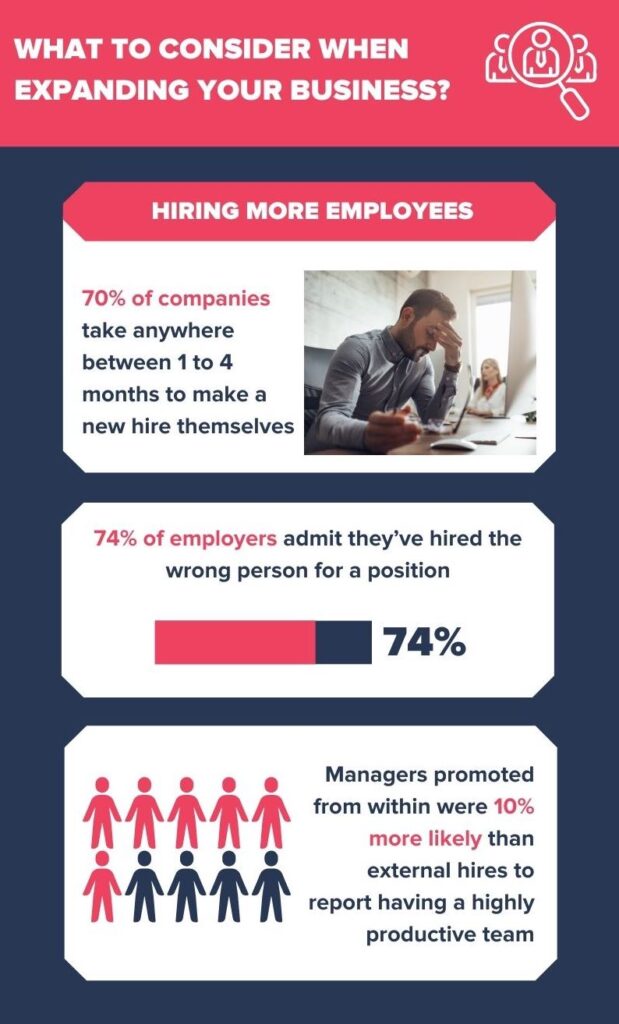
4. Exporting
Exporting allows you to reach markets in other countries as part of your plans for international expansion plans. It is one of the most common methods for entering an international market. Instead of physically producing products in another country, you can ship products.
You can also use a variety of methods for distributing your products in other countries. You can arrange contracts with distributors that specialize in your industry, along with retailers, marketing agencies, and other businesses.
Pros and Cons of Exporting
As with entering another domestic market, entering a new international market increases the size of your potential customer base. You can reach more people with your products or services.
Keep in mind that exporting comes with extra challenges and costs. You may need to localize your products or services, deal with extra shipping costs, and learn the nuances of a market in another country.

5. Licensing
Licensing is a potential option for expanding business operations that involves less risk compared to some of the other methods of expansion. Licensing agreements involve arranging for another company to use your brand or products.
For example, a software development company may license its software for others to market and sell in other regions or countries. The software may include its original branding or feature the branding of the licensee.
Pros and Cons of Licensing
Licensing is another useful method for growing your business to new territories. It also involves less risk, as the licensee is responsible for selling your product. You rely on the licensee to understand the market, which means that you do not need to perform extensive market research.
The risk of licensing is that a licensee may misrepresent your product. This may involve failing to deliver adequate customer service, which can negatively reflect your business in the minds of customers.
6. Partnerships/Mergers
Partnerships and mergers are often used for business expansion. Companies may acquire or merge another company to enter a new market or expand their selection of products. Partnerships also allow businesses to reach new market segments or introduce products to new regions.
A partnership or merger can also work well in conjunction with other methods of expansion. For example, you may partner with another company to release new offerings or enter a new market.
Pros and Cons of Partnerships and Mergers
A partnership or merger may make it easier to achieve a goal of national expansion. You can seek partners or potential mergers with companies that operate in other parts of the country. As with a licensing arrangement, you can rely on the expertise of others that already know the market you want to enter.
Partnerships and mergers include separate risks. A partnership can lower your potential profits. A merger can create management challenges due to the increased size of business operations.
7. Funding
If you generate a healthy profit each quarter, you may be in a good position to grow your business. You may be lucky enough to rely on business profits for business expansion. However, for most business owners, the cost of expansion requires additional funding.
As with launching a new business, you have a variety of options at your disposal for generating new funds:
Grants
Government agencies offer businesses of all sizes access to a variety of grants. For example, federal and state agencies often offer grants to promote development in specific regions or industries.
Raising Capital
Raising capital often involves seeking investors. Startups may use a round of funding to seek major investments. These investments typically come from investment management firms and angel investors.
Loans
A loan is different from an investment. Investors often become partners. Depending on the terms of the investment deal, the investor may even have a say in business operations. A loan allows you to retain complete control over your business.
Pros and Cons of Obtaining Additional Funding
The main advantage of obtaining extra funding is the ability to cover the cost of expansion without relying on business profits. You risk less of your existing success when you seek outside funding.
Yet, obtaining extra funding may not make sense for every business. Obtaining additional funding gives your business additional liabilities. If you accept a grant, you need to comply with the terms of the grant or risk losing your funding.
While you do not need to pay back a grant, you need to repay loans and investments. The cost of repayment may limit the profitability of your business for months or years.

How Much Funding Should You Allocate?
The amount that you need to cover your expansion plans depends on a wide range of factors. You need to estimate the cost of expansion before obtaining additional funding or moving forward with your plans.
Some of the main factors that influence the cost of expansion include:
- Real estate
- Labor
- Equipment and resources
- Administrative costs
- Legal fees
- Advertising and marketing
Your expansion plans may require you to buy or lease commercial real estate. If you plan to expand to a new market, you may need to open new offices, warehouses, or other facilities. Expanding your business may also require more labor. You need to account for the cost of hiring and training new employees.
After finding space for your expanded operations, you may require equipment, software, and other resources. For example, an insurance company may require more computers, printers, and other office equipment. A manufacturer may need a long list of manufacturing equipment.
Other essential costs include administrative and legal fees. Entering a new market may require you to file paperwork to obtain a license or permits, which can add to your costs.
You will also need to promote your expansion, which is where advertising and marketing come in. A portion of your expansion funds should go toward promoting your business online and offline.

8. Testing the Market
Testing the market allows you to explore the potential interest and demand for your products or services. Before expanding to a new market, you should ensure that people want what you have to offer.
Social media is a useful channel for connecting with potential customers and testing the waters. You can use social media to gauge the level of interest in your products. Try using surveys to learn more about your customers and their desire to learn more about your offerings.

Creating a prototype or an MVP (minimal viable product) is another method for testing a market. You can create prototypes for physical and digital goods. For example, building a prototype of a web-based platform or a mobile app allows users to test its functionality and provide feedback.
Pros and Cons of Entering a New Market
Entering a new market increases your potential profits by giving you access to more customers. However, your new customers may have different spending habits compared to your existing ones.
You need to take the time to understand the customers in your new market. Their interests, pain points, income level, and other factors may impact their likelihood to buy your products or services.
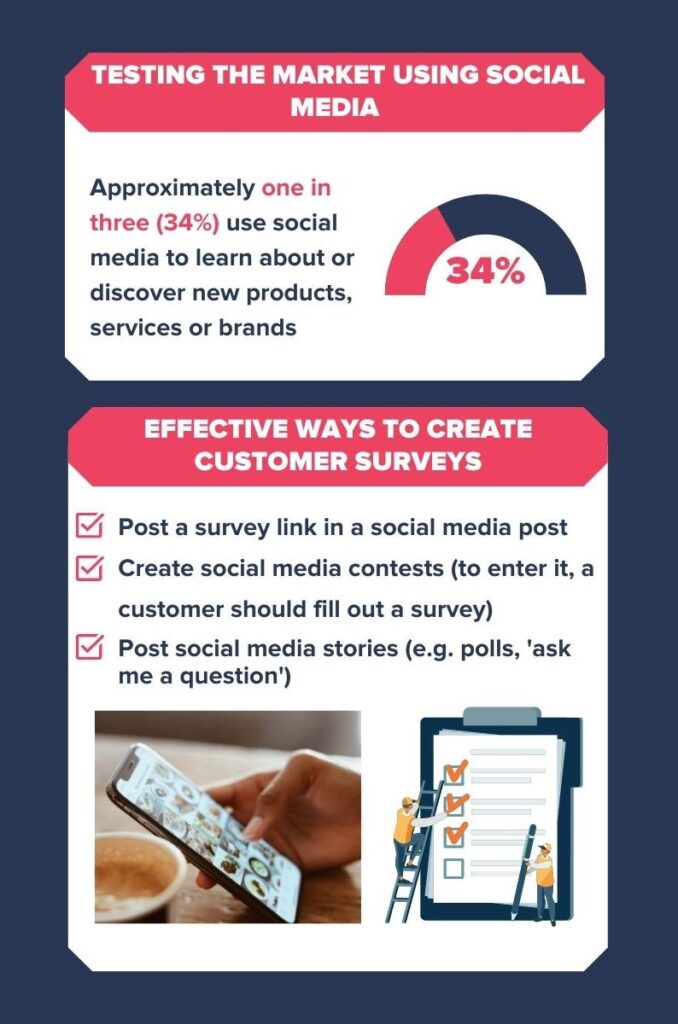
9. Localizing Product/Services
Entering a new market may require the localization of your products or services. Localizing products or services involves modifying them for a specific language, region, or culture.
Localization efforts may include translating instruction manuals or software into another language. You may also need to comply with the cultural and societal attitudes in another country. Products and services distributed to another country may also need to comply with specific regulations or standards.
Pros and Cons of Localization
Localization is another method that helps you reach more customers. You may reach markets that your competition has not yet tapped, which can boost your overall brand recognition and establish your business as a leader in your industry.
The drawback to localization is the cost and time involved. Translating products and software increases the overall cost of your expansion efforts.
10. Economies of Scale
Growing your business can increase your economy of scale. By increasing your level of production, you may reduce the individual cost of each item. This makes your business more profitable.
For example, you may set up new facilities to increase the production of a product and reach a new market. Your enhanced production capabilities may limit the cost per product, as the costs are spread over a larger amount of goods.
Yet, economies of scale also create risks. Increasing production may overwhelm your team if you fail to take additional steps, such as increasing hiring.
11. Brand Growth
Growing your brand is a natural part of expanding your business. Entering new markets spreads brand awareness, as more people become aware of your business and products.
Now is also a good time to reevaluate your brand image. You should ensure that the image you present to future customers matches your vision for the company. As your business profile grows, it will become more difficult to alter your brand identity.
Use the following steps to develop a strong brand identity:
- Learn more about your audience
- Define your value proposition
- Research your competition
- Create brand assets
Use your audience and competition to determine the strengths you want to highlight. You can then work with experienced graphic designers to create effective brand assets, which include your logo and color schemes.
12. Research and Analysis
Extensive research and analysis are needed before attempting to expand a business. Areas to research include:
- Market research to understand your new target audience
- Legal requirements when exporting to another country
- The logistics of exporting or shipping to another region
- The costs involved in establishing new locations and hiring more staff
- The level of competition in a new market
- Your current financial situation and profitability
Research any area that may impact the success of your business. Perform your research with the same diligence that you used when developing your initial business plan.

What Analysis Needs to Be Completed Before Expanding?
Before expanding, you need to analyze the market to estimate the profitability of your expansion efforts. You also need to analyze your current profitability to create a baseline for monitoring the performance of your business strategy.
Monitoring specific key performance indicators (KPIs) can give you a better indication of your success. Here are eight essential expansion KPIs to track before, during, and after expansion:
- Customer acquisition cost (CAC)
- Customer lifetime value (LTV)
- Sales revenue
- Monthly recurring revenue (MRR)
- Revenue growth rate
- Month-over-month growth rate
- Website conversion rates
- Active users/churn rate
Using business management software can help you monitor these expansion metrics. You can decrease the risk of inaccurate data and easily generate reports to assess your growth and performance.

1. Customer Acquisition Cost (CAC)
Customer acquisition cost (CAC) is the amount that you spend to bring one new customer on board. Your CAC is likely to increase during the initial stages of your expansion plans. CAC is determined by dividing your total marketing and sales expenses by the total number of customers acquired.
2. Customer Lifetime Value (LTV)
Customer lifetime value (LTV) assesses the total amount of revenue generated by a single customer over their entire relationship with your business. A low LTV indicates that customers are not sticking around. A low LTV often goes hand in hand with low customer retention rates and lower spending per transaction.
3. Sales Revenue
Sales revenue offers a big picture look at the overall revenue generated from all customers during a period. Reviewing your sales revenue and comparing it to previous quarters can help you track any increase or decrease in sales during expansion.
4. Monthly Recurring Revenue (MRR)
MRR is an important metric for businesses with subscription-based products, such as Software-as-a-Service (SaaS) companies. MRR is the predictable total revenue that you generate from active subscriptions. This is money that you can count on each month, making it useful for calculating your cash flow.
5. Revenue Growth Rate
The revenue growth rate is determined by comparing the sales revenue from previous periods. For example, if you want to review the monthly revenue growth rate, you compare the sales revenue from the two most recent months.
6. Month-Over-Month Growth Rate
The month-over-month (MoM) growth rate offers a simple assessment of how quickly your business is growing. The MoM growth rate becomes more vital during your expansion efforts. This KPI should continue to climb each month as you enter new markets and target new customers.
7. Website Conversion Rates
Website conversion rates allow you to analyze the effectiveness of your marketing campaigns. Low conversion rates mean that your offerings are not appealing to the needs of website visitors. You may need to revise your strategy to narrow your focus to a specific demographic.
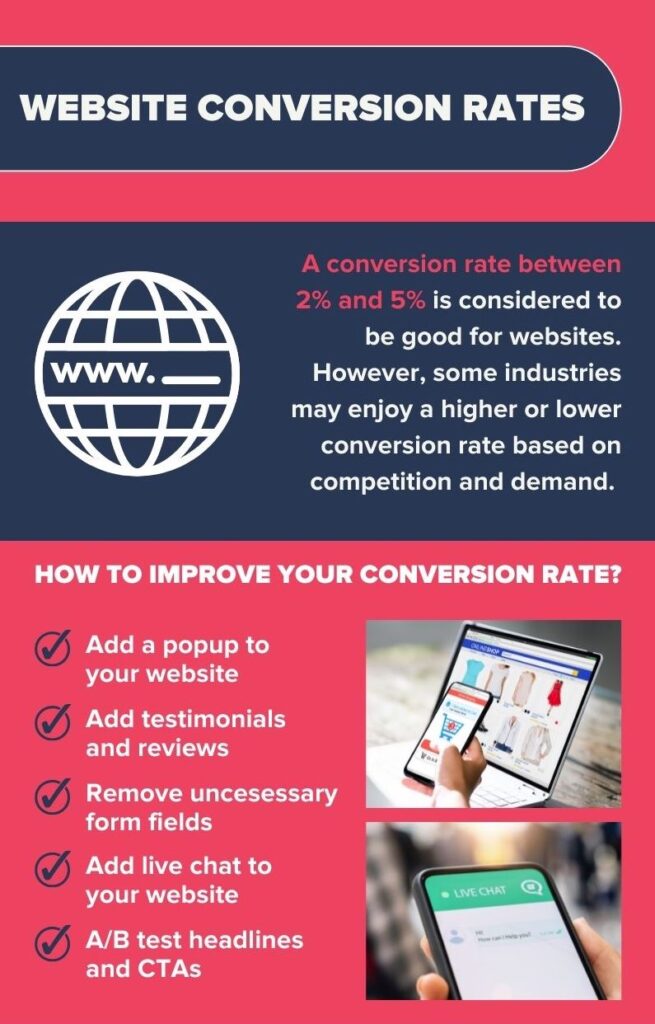
8. Active Users/Churn Rate
“Active users” is the total number of users that are currently paying for your services. The churn rate is the rate of users that stop paying for your services. Compare active users and churn rates each month. Explore these KPIs as you expand to new regions to ensure that you are acquiring new customers.
Unique Ways of Expanding a Business
You do not need to reach a new region or partner with another company to expand your business. Along with common business expansion methods, you should explore the following unique expansion strategies:
Enter a New Industry
Business expansion often involves offering existing products in new markets or releasing new products to existing markets. However, entering a new industry may offer an alternative way to grow your business.
You may find that your business skills or products are better suited in a different industry compared to your current one. For example, a software development company with experience in mobile app development may transition to video game development. A restaurant owner may find better success in catering.
Scale Down Your Operations
Scaling down your operations is the opposite of expanding your business. However, it allows you to focus on one or two core offerings. You can streamline your line of products or services and focus on a specific niche market.
Scaling down and focusing on a small niche increases the efficiency of your business operations. After reducing the scale of your operations, you set a new baseline for tracking business growth. You start from a smaller scale, which gives you more room to grow.
Limiting your operations to focus on a smaller market is useful for businesses that struggle to establish a recognizable brand or fail to develop a loyal customer base. You can zero in on the issues impacting your business before attempting to regrow your business.
Franchising Your Business
Franchising is an interesting business expansion strategy that does not work well in all industries. Franchising involves allowing a franchisee to distribute your products or services.
The franchisee continues to use your branding. They may also need to follow specific business processes to maintain consistency across all franchises. However, as the franchisor, you do not have control over the daily operations of the franchises. This leads to the risk of a franchisee harming the reputation of your business.

Developing a Marketing Plan for Business Expansion
Whether you choose to create a new product, enter a new market, or partner with another business, you need a “go-to-market strategy” to promote your expansion. The most important aspects of a business expansion marketing plan include:
- Brand Growth and Recognition
- Social Strategy
- Website
- Digital Advertising
- Offline Marketing
Use the following tips as you prepare each component of your marketing plan:
1. Brand Growth and Recognition
Brand growth is one of the main areas to explore when planning a business expansion. After assessing or developing your brand identity, you need to find ways to promote it.
Here are some of the steps involved in promoting stronger brand recognition:
- Identify your strengths and values
- Identify your target audience
- Research your target market
- Develop your brand positioning
Identify the features of your brand that you want to promote. This includes the strengths and values of your brand. Identify and research your target audience. Try creating buyer personas for your potential customers. A buyer persona is a profile of an imaginary person that reflects your target audience.
A buyer persona typically describes the following details:
- Name
- Age
- Interests
- Income
- Education
- Location
- Language
After researching your target market, you need to focus on brand awareness and positioning. Producing more content, maintaining consistency, and incorporating SEO are just a few of the ways to boost brand awareness.
Brand positioning involves promoting the strengths and values explored earlier using a combination of online and offline marketing. Your marketing plan should cover all bases, including social media, search traffic, and physical ads.

2. Social Strategy
As mentioned, social media is useful for exploring the market. You can assess interest and demand for your products. You should also continue to rely on social media to push your marketing efforts during expansion.
3. Website
A website is a vital component of a successful marketing plan. Your website acts as a central point for connecting all your marketing efforts. You can create landing pages for each of your marketing campaigns and to highlight new products or services.
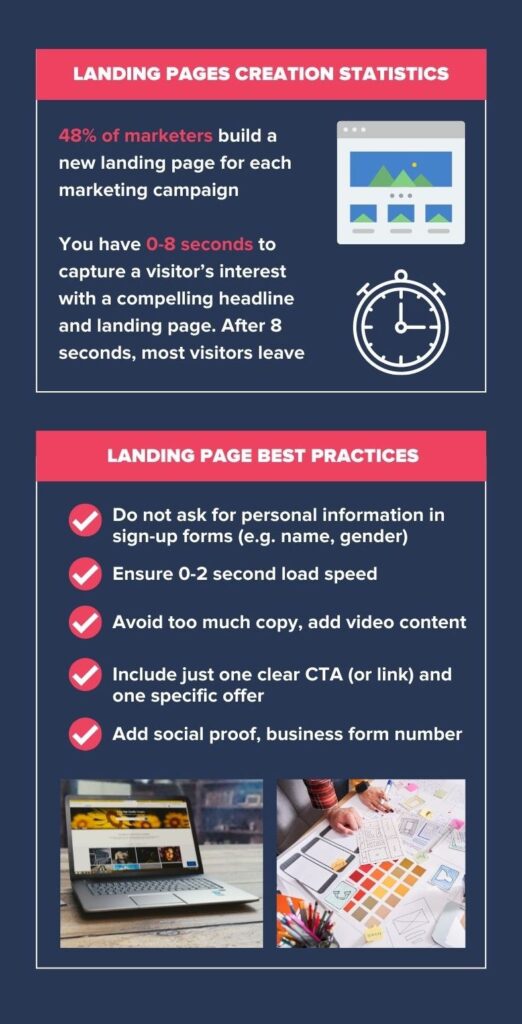
4. Digital Advertising
Digital advertising helps promote brand awareness. Using a variety of digital advertising and marketing techniques allows people to find your business.
Here are common forms of digital advertising and marketing:
- Search engine optimization (SEO)
- Pay-per-click (PPC) advertising
- Social media advertising
- PR articles
- Content creation
If you do not have experience with digital marketing, consider hiring experts. A marketing agency can devise effective strategies to help increase awareness of your products.
Search Engine Optimization
Using SEO boosts brand awareness, which is an important part of business expansion. SEO involves the use of targeted keywords and technical practices to make your website more relevant to specific searches.
Pay-per-Click (PPC) Advertising
PPC advertising offers fast results, allowing you to gain an immediate response from future customers. After your PPC campaign launches, you should quickly begin receiving web traffic.
Social Media Advertising
Paid social media ads help you connect with more users, which can enhance your overall social media strategy. Instead of waiting for people to share your posts, you can pay to have ads appear in users’ social media feeds.
PR Articles
Press releases are a traditional method for announcing business expansions. A press release is an article that offers a summary of recent business development, such as opening a new location or releasing a new line of products.
Press releases are distributed on a variety of platforms, including newspapers, industry magazines, websites, and other media outlets.
Content Creation
Content creation involves the publication of original content, such as blog posts, videos, tutorials, guides, and newsletters. Creating original content provides more value for your potential customers. You can give consumers helpful knowledge related to your products or services.
5. Offline Marketing
Offline marketing is an area that many new businesses fail to take advantage of. While people spend an increasing amount of time online, offline marketing remains a powerful tool for grabbing attention. This allows you to capture a larger share of the market.
Some of the most effective offline marketing methods include:
- Business cards
- Community engagement
- Traditional advertising
- Flyer distribution
Here is a quick look at how each of these methods can assist with business expansion:
Business Cards
Business cards keep people from forgetting your business. It also ensures that they can easily contact your business.
A business card can also help shape potential customers’ impressions of your business. A creative business card design allows you to stand out or reinforce your brand image.
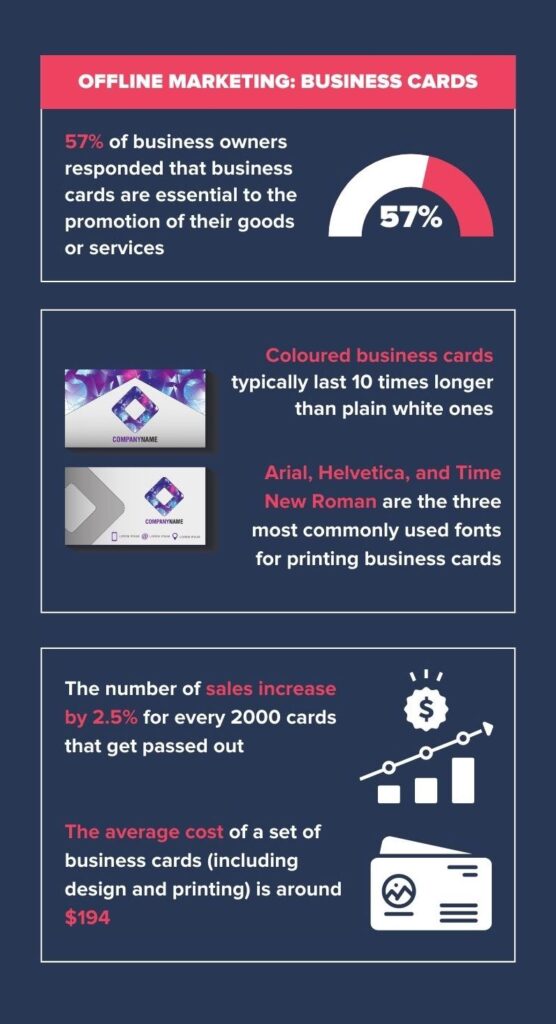
Community Engagement
Community engagement is useful for both promoting your brand and testing the waters. You can engage with your target audience to learn more about their needs and preferences.
Traditional Advertising
Traditional advertising includes paid advertisements using radio, TV, billboards, and print publications. These methods target people when they are focused. You have their full attention, which allows you to leave a lasting impression.
Use traditional advertising to target new customers in the markets that you plan to enter. Make sure that people are aware of your products or services.
Flyer Distribution
Flyer distribution can help you create a stronger connection with potential customers. Paper-based content helps increase brand recall and provides a greater emotional impact.

Web-based platforms such as Oppizi can help you manage your fly distribution campaign. Oppizi provides a convenient interface for tracking essential expansion KPIs for reaching your marketing goals.

Business Expansion Checklist
The following business expansion checklist covers the most essential steps. Double-check this list as you prepare to expand your business:
- Choose an expansion method
- Analyze the market
- Review your finances
- Consider your internal processes
- Assess liabilities and responsibilities
- Review partnerships, mergers, or acquisitions
- Test the market for expansion
- Obtain funding if necessary
- Allocate resources for expansion
- Acquire additional resources for expansion
- Determine your staffing needs
- Assess your brand identity
- Develop a marketing plan
- Initiate a social media strategy
- Develop a website
- Market your business online
- Reach customers with offline marketing
Conclusion
Business expansion allows you to grow your business and generate more profit. Successfully expanding a business also requires a detailed plan.
You need to develop a business strategy that allows you to grow without sacrificing the work that has helped you achieve your current level of success. This involves assessing the market and determining the profitability of your expansion plans.
You also need to compare methods of expansion. Common options include entering a new market, releasing new products, and partnering or merging with other businesses. If you choose to go forward with the expansion, the next steps involve allocating funds and resources. You should also promote your expansion efforts with online and offline marketing.
Online marketing often includes web design, SEO, paid advertisements, and social media strategies. Recommended offline marketing options include traditional advertising, community engagement, and flyer distribution, to name a few.
As a final reminder, continue to monitor your key performance indicators (KPI). Pay close attention to growth rates and the cost of customer acquisition to assess the effectiveness of your expansion plans.







